A favorite pastime of a certain subset of cinephiles is to theorize, speculate, and even wager on who will become the next James Bond. Seriously, it’s right there in the sports books next to the horse races and the billion-to-one bet that the Sacramento Kings will ever make the playoffs again.
But what is it, precisely, that has so many of us so invested? If the 007 movies themselves tend to be more or less the same, employing action/spy genre tropes with the formal discipline of a sonnet, why does it really matter who steps into the bespoke menswear and wields the Walther?
Speculating which prospective actor feels enough like past Bonds to play the role is the wrong game. The question in determining who should inherit the role is, what should Bond be? And for that, we must take a tour through previous Bonds to examine what each embodied for his time. Only then might we also answer the question of which actor portrayed the best 007, if such a thing as “best” can really be judged.
Sean Connery
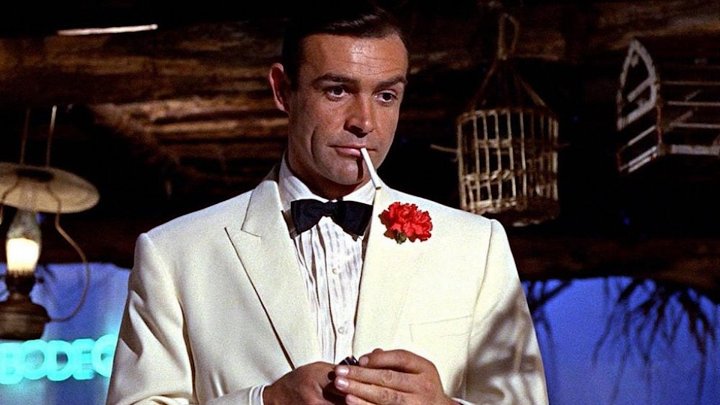
Many will insist that Sean Connery is the best and will brook no argument. Their case is familiar: The Scotsman originated the character on screen and embodied a thick-chested brand of mid-century movie star masculinity in the ilk of Kirk Douglas, Burt Lancaster, John Wayne, and Charlton Heston that has since gone extinct. Connery himself hated playing Bond, but perhaps it was his distaste for the role that gave him the necessary distance to make the character so pathologically effective as a liar and killer. People tend to think of Connery’s Bond as charming, but really he’s just smugly indifferent to the effects of his actions, including his vulgar treatment of women.
We remember the 1960s as all flower children and peace protests, but that was the late ’60s. The early ’60s, and the 1950s out of which Bond emerged in the original Ian Fleming novels (the first, Casino Royale, was published in 1953), were very conservative times. That era was also one the most dangerous, given the Cold War, when the U.S. and USSR were building up their nuclear arsenals with new planet-killing hydrogen bombs. What Connery brought to 007 was a firm and steady presence who had no problem ruthlessly dispatching enemies to keep the West safe from totalitarianism and nuclear apocalypse.
Of course, Bond also emerged as one of the world’s foremost male fantasies, a reoccurring attraction in Playboy Magazine, which entered popular culture the same year as 007. A prime draw for men was the ease with which James could seduce women, or otherwise just overwhelm them, with their occasional protests treated as nothing more than amusing foreplay. Another selling point was that his expensive clothes, cars, and gambling habits never seemed to affect his personal bottom line. Though all of this paled before the ultimate pipe dream, also exaggerated in that other ’60s era fantasy, Mad Men: the ability to toss back hard liquor all day long and not have it affect judgment, reaction time, or productivity.
Roger Moore
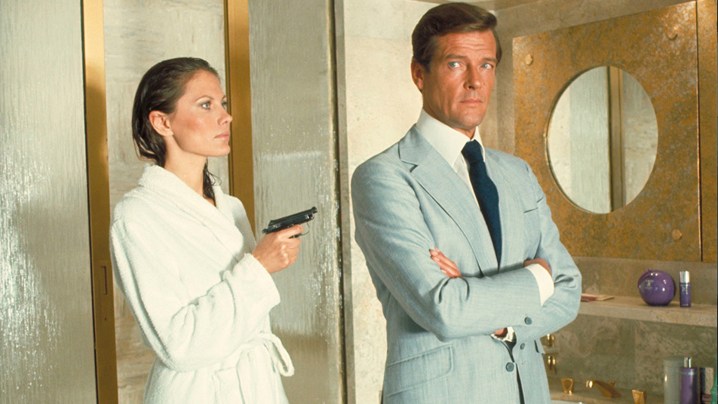
This conservative Bond born of the ’50s was increasingly at odds with the progressive and radical sensibilities that emerged throughout the 1960s. One of the reasons that George Lazenby — the Australian model who took over for Connery in Her Majesty’s Secret Service — only signed on for one movie was because his agent had told him that Bond would be finished in the “liberated 1970s.” Lazenby himself said, “Bond is a brute … I’ve already put him behind me. I will never play him again. Peace — that’s the message now.”
The new decade required, perhaps not a kinder, gentler Bond, but one that seemed less comfortable with brutality. If anything characterizes Moore’s super spy, it’s his unflappable nature, his tongue-in-cheek approach to the material. The tropes were so well worn by that point (and so ridiculous) that his 007 outings were often just this side of parody. Moore’s Bond was smooth and untroubled in every situation, and not nearly as coarse and visceral as Connery. This portrayal seemed to suit the post-Vietnam, post-Civil Rights era. Americans were tired of blood and body bags and corrupt Presidents and they weren’t too keen on heroes that uncritically represented government institutions like spy agencies.
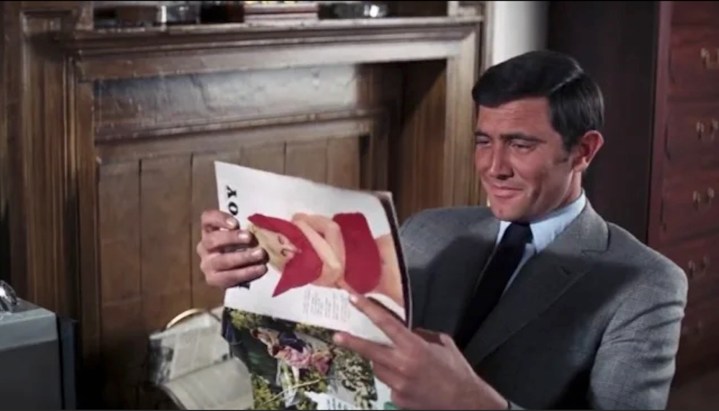
As such, Moore as Bond is pure fairy tale. He clearly doesn’t possess the physical abilities required for the fights and chases, but he’s such a likable dude (Moore himself was a famously nice guy). Moreover, he didn’t need to be as aggressive with women in the free love era. Look at a film like Shampoo (1975) with Warren Beatty in which everybody sleeps with everybody at the drop of the hat. Sex was evidently as easy to get as water (at least if you were as handsome as Moore or Beatty). The ’70s were also a funky time and demanded a funkier Bond, one of the reasons why the first Moore outing, Live and Let Die, owes so much to the emerging African American cinema of the time, including early Blaxploitation, and why some of the Moore pictures were so downright goofy.
But except For Your Eyes Only (1981), Moore was not the right Bond for the 1980s, one of many reasons why Octopussy (1983) and A View to a Kill (1985) are such traffic accidents. Moore was also too old by that time. More to the point – he seemed old. (Tom Cruise, Harrison Ford, Clint Eastwood, and others have proven that actual age has less to do with it.) In any case, it was a time for a change. Enter Timothy Dalton.
Timothy Dalton
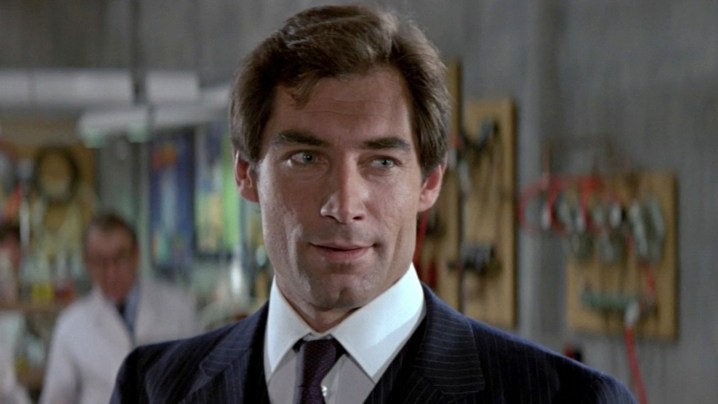
The irony of Dalton’s unsuccessful tenure as 007 was that the two entries in which he appeared, The Living Daylights and License to Kill, are both decent movies. Audiences just didn’t care. Dalton was a smaller guy, darker than previous Bonds, more buttoned-up, less smirky. His toned-down sexual appetites were appropriate to the emerging AIDS era (Roger Ebert noted that he was practically chaste compared to previous Bonds). But in every other way he was completely out of step with the popular action heroes of the ’80s, with their gym-bulked physiques and/or skill with martial arts: Arnold Schwarzenegger, Sylvester Stallone, Chuck Norris, Jean Claude Van Damme, Steven Seagal, even Harrison Ford.
Not that any of those guys would have been right for Bond either. But perhaps that was the point. The cinematic trends and preoccupations of the day just weren’t very 007. Ironically, Connery had a late-career renaissance at the same time, appearing in films that were more in step with audience tastes – a very bloody version of The Untouchables (for which he won an Oscar), teaming with Ford in Indiana Jones and the Last Crusade, and as a Russian on the side of democracy in The Hunt for Red October. The franchise producers should have taken a longer break between Moore and Dalton, parsed what audiences wanted, and allowed for 007 fatigue to fade. They learned their lesson though, waiting six years to bring 007 back to the screen in the person of Pierce Brosnan.
Pierce Brosnan
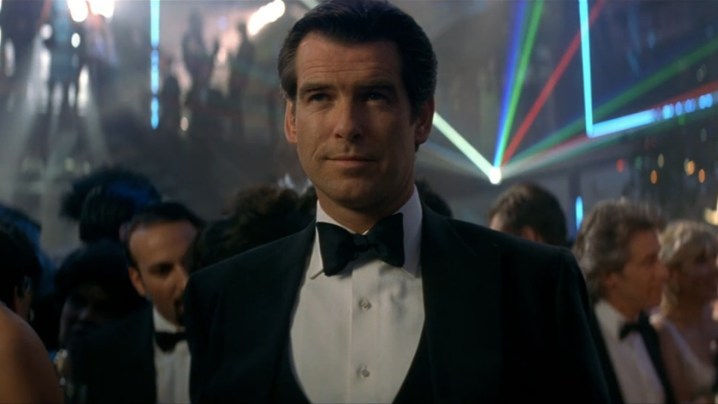
Like Moore, who had already auditioned for Bond by playing a spy in The Saint on television, Brosnan played Bond-lite on TV in Remington Steele, but he famously couldn’t get out of his NBC contract to step in after Moore’s retirement. But Barbara Broccoli, taking over producing duties from her father, Albert, evidently couldn’t get Brosnan’s handsome Irish mug and lean tuxedoed physique out of her imagination. (It was still all about the traditional tux at that point. The producers weren’t yet ready to think outside the box, as they were with Craig, who always seemed ill at ease in a monkey suit). In any case, Brosnan finally took on the Bond mantle in the 1995 reboot, Goldeneye.
Unlike Timothy Dalton, who couldn’t compete in the Mr. Universe contest that was ‘80s action cinema, Brosnan was right at home in his era, when men of leaner builds – Johnny Depp, Will Smith, Brad Pitt – reflected the tastes of the times. He also made sense in the action-hungry ‘90s when practically every male star under a certain age – Nicholas Cage, John Travolta, Keanu Reeves, Wesley Snipes – transformed into an action hero for the booming global film market. Brosnan’s Bond flicks — big, bright, slick, and fast — were perfect for that environment. Tomorrow Never Dies even got in on the American fad of embracing Hong Kong action movies, so popular at the time.
Daniel Craig

But Brosnan’s era was short-lived once 9/11 changed everything. Over the next decade audiences wanted their franchise entertainments to reflect troubled times, to be long, dense, and dark, with political overtones. These included Star Wars Episode III: Revenge of the Sith and Christopher Nolan’s Batman movies. One of the new Star Trek movies was even subtitled “Into Darkness” and was an allegory condemning drone warfare.
As Nolan had advocated Batman’s fascistic methods (torture, domestic wiretapping), Craig’s most successful Bond film, Skyfall, was a paean to the necessity of Empire, a two and a half hour bulletin insisting that only a man with a gun could keep the world safe using any extra-legal tactics he deemed fit. This is why M (Judi Dench) compromises MI6 and then dies in this one; and Moneypenny (Naomi Harris) gets yanked from the field and put firmly back to secretarial work.
It’s also why the climax of the world’s most expensive and technologically advanced movie franchise takes place in a stone church with Bond dispatching the bad guy with a knife. Craig was perfect for this material. Not only did he recall Connery at his bruising best, but his no-nonsense, even dour, approach was appropriate to an era that had little use for corn or even wit.
Who was the best and who might be next?
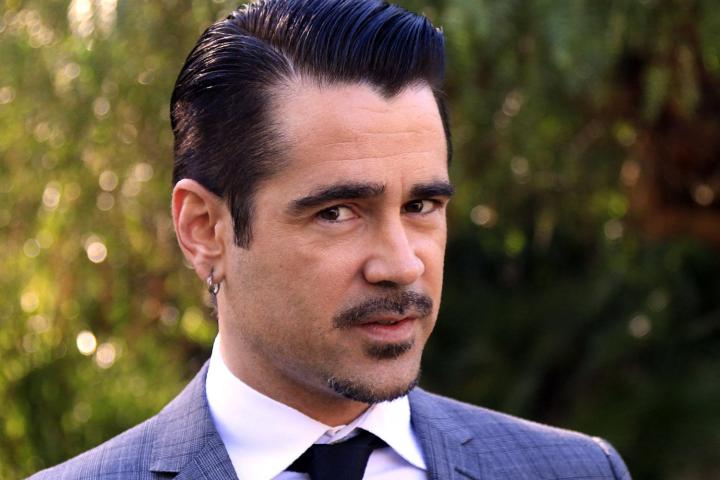
Perhaps the answer to who is the “best” Bond comes down to who best fits their era, while the actors that were not right for their times are now considered the worst: mid-’80s Moore, George Lazenby trying to do Sean Connery at the tail end of the ’60s, Timothy Dalton adrift in a sea of ’80s musclemen, and post 9-11 Pierce Brosnan, when the cartoonish Die Another Day utterly failed to capture the mood of a new era the way that The Bourne Identity from the same year (2002) had.
But even Connery wasn’t as effective in later outings. I defy anyone to watch Diamonds are Forever and then Casino Royale and tell me that Connery is a better Bond than Craig. One could also argue that after Skyfall — the financial and arguably artistic pinnacle of Bond — even Craig became an ill fit, with SPECTRE being an expensive, aimless mess. His male protector role became less fashionable as the world began to assign culpability to Western nations for the War on Terror. This is why it is so hard to say which actor should step in next. It’s impossible to imagine what globe-transforming events might occur of the kind that informed previous eras, and which actor might best reflect what audiences want in those times.
Colin Farrell could be great. Post-bad boy days, he’s become such an interesting actor and he seems to bear the weight of his hard knocks. He projects a sense of humility now that could work representing an era that has a lot to atone for. But at 46, he’s too old. Any new Bond must be young enough to take on the mantle for another 15 years. But in an epoch of exponential change, 15 years is an eternity. The world might be unrecognizable a decade and a half from now, and so could James Bond.
But that’s what makes Bond last, isn’t it? The fluidity, the adaptability of the character to fit any time the character is in. Whoever the next Bond may be –English, Scottish, white, Black, male, female — they will undoubtedly reflect the times they are in and their movies, like all the others that came before it, will serve as time capsules to era long since passed.
You can stream all the James Bond movies on Prime Video.
Editors' Recommendations
- Amazon Prime Video was the most underrated streaming service in 2023. Here’s why
- 3 underrated movies on Prime Video you need to watch in December
- You probably didn’t watch the most underrated crime thriller of the 2010s. Here’s why you should see it now
- Christopher Nolan should direct a James Bond movie. Here’s why
- Amazon Freevee’s Jury Duty gets a cast commentary in June




